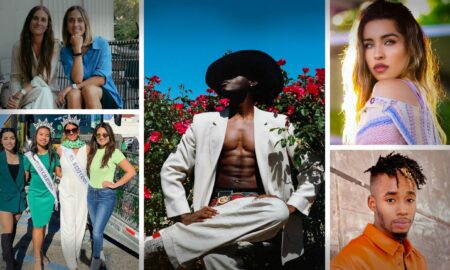

Today we’d like to introduce you to Ashley Walters.
Ashley, please kick things off for us by telling us about yourself and your journey so far.
I grew up on the east coast and studied cello performance at Vanderbilt University. In college, I had the chance opportunity to work with David Harrington of the Kronos Quartet. I had emailed him with a question about a Philip Glass piece that he had recorded and he responded with a phone call and an offer to coach my student string quartet, as well as a box of Kronos’ CDs. He had seemed to me like an untouchable artist and I couldn’t believe that he took time out of his touring schedule for this quartet of college kids. I will never forget his generosity.
I grew up listening to Kronos and loved how they played repertoire that was so far outside the traditional string quartet canon. When I met Harrington, he had such a willingness to share his artistic ideas and thoughts and he gave me a glimpse into the life of a professional musician who played music that was modern and collaborative — a living art form. Although I couldn’t have articulated it clearly at the time, the experience showed me that the contemporary music community was generous, exciting, and something I very much wanted to be a part of.
At Vanderbilt, I also worked with another notable musician devoted to contemporary music, John Kochanowski of the Concord String Quartet. He was full of colorful and inspiring stories about working with great composers, including John Cage. Up to then, I had studied primarily classical music — think Bach, Beethoven, and Brahms — but the inclination to explore music outside of those confines was building and eventually led me to CalArts for my masters and UCSD for my doctorate. At both schools, I had the opportunity to build adventurous repertoire, but, more importantly, I established collaborative relationships with numerous composers, many of whom I still work with today.
Now, I perform, travel, and record as a cello soloist and as a member of Wadada Leo Smith’s Golden Quintet, the Formalist Quartet, Nief Norf, and wild Up. I also teach and mentor students at Chapman University, Moorpark College, and the Nief Norf Summer Music festival. When I’m not playing music, I’m an avid tap dancer, I have a love for gardening and live happily in Highland Park with my husband, Luke Storm, and our cat, Boo.
Can you give our readers some background on your art?
I am a cellist who specializes in contemporary classical music, often written by living composers. Working in this genre is challenging, dynamic, and full of surprises. In older classical music, pieces were written with a greater uniformity of style and musical language (although composers had their unique voices). Today, there is practically no standard form or style, no constraints on the types of sounds and extremes of expression used. This means that my music-making covers an exceptionally wide range of techniques and timbres. While I love the rich sound of the cello — that singing, somber tenor voice — I also love music that explores the instrument’s ability to sound distorted and rough or whispering and whistling. To me, the juxtaposition of these sounds against the “classic” cello sound is extremely beautiful!
Not only does every score sound different, they often look very different. Some scores are sparse, merely dots on a grid; some look like standard notation; and some cross over into the world of visual art. As a performer, the way the music meets the eye influences the interpretive process in profound ways.
Finally, collaboration is a major part of my professional career and personal interest. Because I specialize in music of the present, I am often the first person to play a piece, which gives me the special opportunity to have a dialogue with the composer during the creation process. Many of my music collaborators are dear friends and it is always a gift to have a composer write something especially for me.
We often hear from artists that being an artist can be lonely. Any advice for those looking to connect with other artists?
Connecting with another artist doesn’t need to have the pressure or weight of beginning a project together; it can be as simple as getting a coffee with someone whose path you cross. I think we often focus too much on connecting with artists in our own field, but making contact with someone outside our specialty can lead to the most interesting, challenging, and fruitful collaborations… and, sometimes, in the best of scenarios, great friendships.
What’s the best way for someone to check out your work and provide support?
In 2017, I released an album on Populist Records, a local label. Titled Sweet Anxiety, it showcases four living composers, each of whom is or was once active in Los Angeles. To me, the project feels like a celebration of the immense creative life in our city. You can order a disc or buy a digital download here: http://www.populistrecords.com/ashley-walters—sweet-anxiety.html.
Another great way to support my work is to go to my shows! My website — ashleywalterscello.com — has a list of upcoming concerts, some in LA and others across the country. And if you come to a show, please say hello! I love getting to know my audience and it would be great to meet a fellow VoyageLA reader.
Contact Info:
- Website: ashleywalterscello.com
- Email: ashwalters@gmail.com
- Instagram: instagram.com/ashleywalterscello/




 Image Credit:
Image Credit:
Vero Kherian (black dress portrait and forehead to cello), Chris Kallmyer (burgundy and yellow set), Emory Hensley (trio of musicians in dark), Jennifer Bewerse (floral dress), Luke Storm (candid with CD), Jesse Gilbert (quartet image)
Getting in touch: VoyageLA is built on recommendations from the community; it’s how we uncover hidden gems, so if you know someone who deserves recognition please let us know here.



















